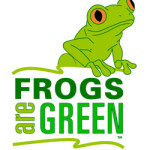Interview by Susan Newman
When was your organization founded? Please tell us a bit about its mission, goals…
Save the Frogs is the first and only public charity devoted to amphibians. It was founded in May 2008. Our mission is to save and protect amphibians, as well as to respect and appreciate nature and wildlife.
I founded Save the Frogs because frogs were rapidly disappearing around the world. About one-third of amphibians are on the verge of extinction. At least 2,000 species are threatened and if nothing is done, will likely go extinct. Most of the work previous to Save the Frogs was done by scientists helping amphibians, but educating the public about the issue is also very important.
Save the Frogs has education programs and works to get laws in place, for example, to get frogs legs out of restaurants, provide schools with alternatives to dissecting frogs, and prevent non-native frogs from being imported.
The biggest thing is environmental education so I created Save the Frogs Day, an event which comes around each year. This April 28th will be the 4th annual Save the Frogs Day and there will be 200 events in 30 countries, which will top last year’s 143 events in 21 countries.
The events bring awareness around the world, especially on that particular day and it receives significant publicity in the media.
What is your educational background and what lead to creating this organization?
I was always interested math and science and studied mechanical engineering as an undergraduate at the University of Virginia, but soon realized I wanted to pursue environmental science. I went back to school to study biology in preparation for graduate school.
I spent a summer in Hawaii volunteering with PhD students who were studying birds. It was then that I knew environmental science was my path. I loved hanging out at streams, so thought about what types of animals live in streams and then found out that frogs were disappearing. I thought frogs would be great to study for my PhD, so I went to Australia and came across Mark Hero in South East Queensland, who became my supervisor. I studied frogs, and the disease, chytrid fungus, which is driving amphibians to extinction.
I finished my PhD, came back to the United States and founded Save the Frogs. I love my work because it’s a combination of communicating awareness, educating the public and science.
What are some challenges you have faced and how did you deal with them?
The first challenge was funding, because we founded in 2008 during the economic recession. Raising funds for a non-profit is hard in the best of times, plus saving frogs is still somewhat of an obscure topic. Most people still don’t know why we should protect frogs.
Save the Frogs works hard on awareness by using the web and speaking to the public directly.
I try to get publicity through newspapers and for-profit corporations involved. Some of them have practices that are harmful to the environment. Many companies when approached don’t necessarily care about what they are doing and only care about making money.
At least one billion frogs are taken out of the environment for use as food in restaurants (frogs legs) and farm-raised frogs carry diseases and if you approach restaurants and ask them to stop selling them, they only see it as a monetary loss.
I have and will continue to approach tech firms in nearby in Silicon Valley for funding. Many of them have no environmental program.
How is climate change effecting amphibians?
Climate change is a huge problem, so it’s good that it gets a lot of attention. We need more people in the government looking seriously at climate change and what to do about it. It’s very important to amphibians because they are very connected to precipitation levels.
“Amphibian” means two lives, one on land and one in the water. Frogs either lay their eggs in water or in leaf litter and the ones who are not in the water are in cloud forests in tropical countries. As the temperature rises, the cloud level rises and the leaf litter dries up. This means that the frogs must continually move up and eventually will run out of space. Many of the frog species live on a particular mountain and only that mountain, so if something happens to that species it can go extinct.
It’s not just tropical forests that are in trouble, Yellowstone National Park in the U.S. has had droughts. About one fourth of the ponds have started to dry up and many frog species are on the decline.
Save the Frogs had five posters up in airports around the country and the one in O’Hare is still up and has been seen by hundreds of thousands of people.
How do you reach your targeted audience? Is it through your website, advertising or social media or another route? Which is most effective and why?
The best way I can reach people is through our Save the Frogs website which has helped make it a worldwide organization. Our e-newsletter is also a great tool because whenever we need help and send it out, we can reach tens of thousands of people. We recently sent out an email with a free download of “The Wild World of Frogs” and it got 40,000 downloads in the first day! Many of those downloads were from friends forwarding the newsletter to their friends.
We create a variety of flyers people can post around their towns. Most things we do are free and up on our website and if you give people the tools they will help spread the word.
Some of the other ways we reach people is through our Facebook page with frequent updates, as well as through Twitter.
I give live presentations and did 65 this year. I believe you can get more people involved by interacting with them face-to-face. I’m trying to get more teachers involved and Save the Frogs Day on April 28 is a great way and to get lots of people talking about it.
What can people do to help?
There are lots of ways to help Save the Frogs! Our website has over 250 pages of information. I feel that educating yourself on the issues is the first step and then subscribing to our newsletter to stay informed.
Learning how you can change your ecological footprint is a great way to help. Everything you do effects the environment.
There are lots of ways to volunteer and many things can be done through the internet so you can be from anywhere! There is a form on our website you can fill out. We have various campaigns and also need help writing letters to the government, for example, the campaign to ban Atrazine. Visit our “take action” page.
Save the Frogs is a 5013C public charity and has a wish list of things we need which is also posted on our website.
Tell us about your events around the world and some of the campaigns you have started.
Save the Frogs is an international organization because amphibians are disappearing all over the world. A few years ago I was asked down to Panama to give a five day talk on molecular biology and also taught the scientists there how to detect the chytrid fungus disease. If you cannot detect the disease, how can you do any research on it. The materials and information is available on the Save the Frogs website. “QPC” is the technique for detecting the disease and the materials have been downloaded by scientists in over 30 countries.
Last year I got invited to Korea and was the representative for the 1st Amphibian International Symposium. I traveled around Korea for 10 days doing environmental work. Seeing what types of problems they had, coming up with solutions and giving presentations to communities, groups and schools. We have applied for a $50,000 grant that would go to helping Korea’s amphibians.
In September, 2011 I spent a month in Ghana and helped them start Save the Frogs Ghana. We are registering it as a NGO with the government of Ghana. It will be an independent Save the Frogs working on it’s own. We have written a proposal to help the Squeaker Frog (Arthroleptidae: Arthroleptis) and also to make the Atewa Hills a national park. We are trying to save the Togo Slippery Frog (Conraua derooi) which lives in only two streams and are threatened by mining. They are a fully aquatic frog and swim as fast as a fish.
What is in the works for the future?
Save the Frogs is coming to New York, New Jersey and Connecticut in March 2012. I will be looking for schools and community groups for presentations.
Save the Frogs Day is April 28th and we have a 5k race planned in Seattle and another event in San Francisco. There will be “Ban Atrazine” rallies and we will be raising awareness about it.
New campaigns include a petition to Governor Gerry Brown to stop the importation of American Bullfrogs. About 3 million are imported to the state of California each year. Being native to the east coast, when they come to California, they eat the native wildlife and they are primarily for pets, dissection and frogs legs in restaurants. They carry the chytrid fungus so are spreading the disease.
Nathan’s Famous is now selling frogs legs and I want to get this to stop. The executive and CEOs have refused to address the issue. They need to take some environmental responsibility.
Helping Save the Frogs Ghana
Ghana is a poor country and frogs are in trouble because of illegal foresting. There are now programs in place to teach mushroom farming and bee keeping which can change a family’s life. We will be working to get the Atewa Hills a national park.
To learn more about Save the Frogs visit the links below:
Website: savethefrogs.com
Website: savethefrogs.com/ghana
Facebook: Save the Frogs
Twitter: Save the Frogs
YouTube: Save the Frogs
LinkedIn: Kerry Kriger







I praise you Kerry, I love all frogs and tree frogs specifically. Im glad there is someone out there devoting their time to saving these creatures 🙂